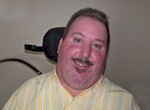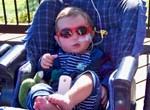Controversial Camp Aims To Help Spinal Cord Injury Patients
October 7, 2009
Source: Portland News – Fox 12
As many as 250,000 people are living with the consequences of a spinal cord injury. Many times, it leads to permanent paralysis of the arms, legs or both. For many, treatment options are limited, but a controversial therapy program gets patients out of wheelchairs and standing on their own.
With the help of a metal bar, 20-year old Amanda Perla manages to stand by herself. It’s quite an accomplishment considering that a car accident on prom night two years ago left her a quadriplegic. At the time, doctors provided little hope.
"They said I would be in a power chair for the rest of my life, and I was in a manual chair within six months," Perla told Ivanhoe.
Perla’s mother, Liza Reidel, wanted more for her daughter, but says therapy options were limited.
"They either didn’t have the equipment or they didn’t have the manpower, or they just didn’t know enough about spinal cord injuries," Reidel told Ivanhoe.
Reidel opened the Step It Up Recovery Center, a controversial program that forces patients out of their wheelchairs and into the gym. Through aggressive exercise and repetitive motions, therapists try to reorganize the nervous system.
"Just in working hands-on with the clients, I’ve already seen gains in little movements that become bigger," Malerie Murphy, a certified spinal cord injury recovery specialist at the Step It Up Recovery Center in Sanford, Fla., told Ivanhoe.
Therapists work the body and mind by helping patients mentally focus on the movements. They work on hip stability by kneeling, and patients practice standing with their knees locked. The goal — help patients regain function, possibly even walk again. Some doctors say it may be providing a false hope.
"Most patients who sustain a significant spinal cord trauma are left with, more or less, permanent neurological deficits," Garrett Riggs, M.D., assistant professor of neurology at the University of Central Florida in Orlando, Fla., told Ivanhoe.
Research has shown nerve cells can regenerate, but Dr. Riggs says that’s not enough.
"Nerve cells do grow, but the problem is getting them to grow from the right spot and make the right connections," he explained.
But Amanda says she’s already gone beyond doctors’ expectations and believes she’ll walk again.
"I think it will happen in a couple of years, yeah," she said.
A young woman trying to re-train her body and re-define medicine’s limits.
Clients undergo therapy three to four times a week and each session lasts about three hours.



